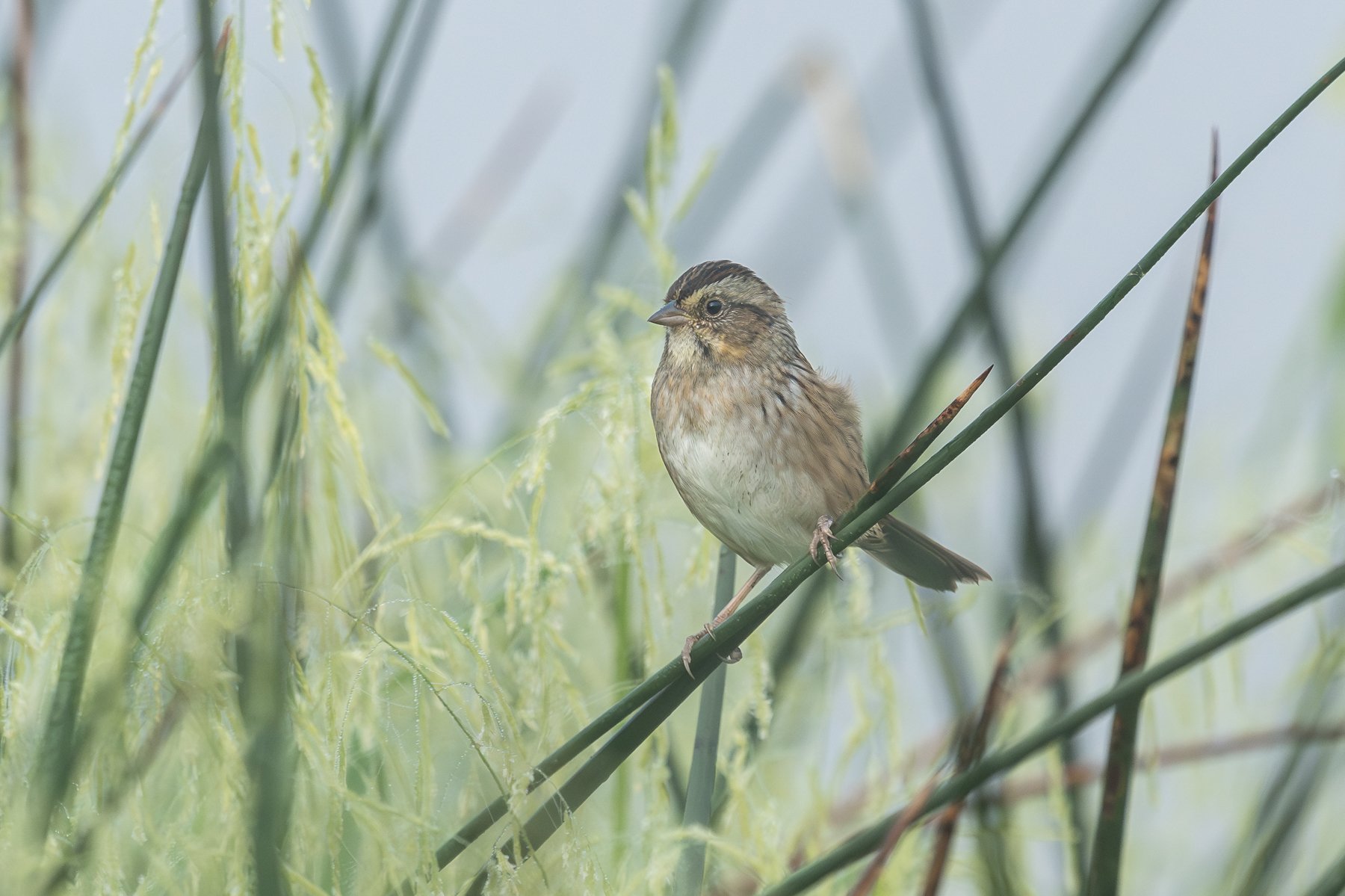At Fair Meadows Sanctuary, the Swamp Sparrow (Melospiza georgiana) is a common migrant and summer resident and an occasional winter visitor. The occasional winter birds that I have seen are invariably found feeding on invertebrates in the shallows of a pond that has year-round open water due to brisk upwelling from underground springs.
A juvenile Swamp Sparrow at Fair Meadows Sanctuary on September 9, 2023. Note the dark brown crown with a grayish brown median stripe, the unstreaked whitish throat, the buffy face and breast, and the more extensive streaks on the breast and flank (photo: Gary Shackelford).
The Swamp Sparrow is most closely related to the Song Sparrow and Lincoln’s Sparrow, the three of which are the only birds that are included in the genus Melospiza. When originally described in 1790 by English ornithologist and collector John Latham, it was given the English name Reed Sparrow, but it was later named Swamp Sparrow by American ornithologist Alexander Wilson, which is the name by which it is now universally known. As its name implies, its breeding habitat includes marshes, swamps, bogs, wet meadows, and pond margins with emergent vegetation such as cattails and bulrushes. During migration it can also be found in weedy or grassy upland habitats. According to Birds of the World, overwintering Swamp Sparrows within breeding range are generally northern birds that have replaced normal summer residents.
Due to its reclusive habit and preference for low, dense vegetation, the Swamp Sparrow is more often heard than seen. To my ear, its song is a little like that of a Chipping Sparrow, though at a slower cadence and more musical. I have enjoyed observing and photographing Swamp Sparrows at Fair Meadows during all seasons of the year, often from a photo blind, and I have spent many hours studying their plumages and behavior.
An adult Swamp Sparrow in breeding plumage. Note the bright rusty crown contrasting with gray face and side of the neck, the white throat bordered by a fine lateral stripe, the narrow blackish eye stripe, the pale gray underparts that are darker on the breast, the boldly striped mantle with bright rusty wing patches, and the buffy brown flank (photo: Gary Shackelford).
In breeding plumage, the Swamp Sparrow displays a rusty crown, a small black patch on the forehead, a grayish cheek and supercilium, a white throat bordered by a fine lateral stripe, rusty wings, black streaks on the back, an unstreaked or lightly streaked breast, and light buff flanks. Its juvenile plumage resembles that of a Song Sparrow or, especially, a Lincoln’s Sparrow. Breast and belly streaks can be seen in all immature sparrows, but the streaks in a Swamp Sparrow are never as broad or as concentrated as they are in a Song Sparrow. Juvenile Swamp Sparrows share with Lincoln’s Sparrows more finely streaked breasts, but Swamp Sparrows have a solid brownish or black crown, an unstreaked dull buffy white throat with the same fine lateral stripe, and buffy rufous wing coverts. Juvenile Lincoln’s Sparrows have a yellowish or orange breast and a streaked, brown crown. Helpful facts for birders in my area are that the ranges of Swamp Sparrows and Lincoln’s Sparrows do not overlap in the breeding season and that both species usually molt out of juvenile plumage before they begin their first southward migration.
Written by Gary Shackelford, Fair Meadows Sanctuary resident manager
Cover image by Gary Shackelford. A nonbreeding adult/immature Swamp Sparrow feeding in the shallows of an unfrozen pond in winter. Plumage is similar to that of a breeding adult, but with a streaked crown, brown tinge to ear coverts, and more extensive buff on flanks.






